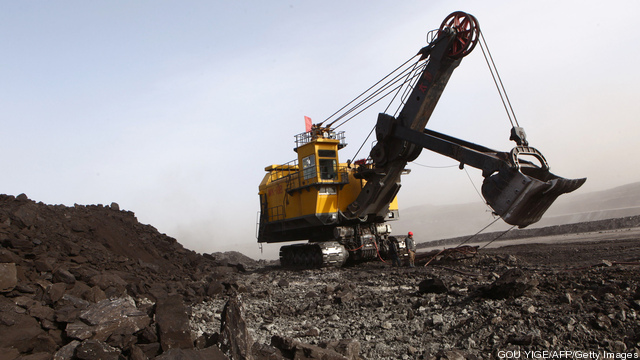 For countries with lots of coal looking for clean alternatives to burning it, Synthesis Energy Systems has an answer: use that coal to run cars and make plastics.
For countries with lots of coal looking for clean alternatives to burning it, Synthesis Energy Systems has an answer: use that coal to run cars and make plastics.
That’s not only technically feasible, it’s actually being done commercially in China, Robert Rigdon, SES President and CEO, told Breaking Energy.
With Chinese partners, SES has been running a small commercial plant in Shandong Province since 2008, converting low-quality coal into synthetic natural gas.
Last week, SES and its partners began operating the Yima plant in Henan Province. Yima is designed to produce 300,000 tons/year of methanol from high-ash coal, and the plant may be expanded further, said Rigdon.
He said the technology is now mature, and he’s looking for applications in the US as well as places like China, India and Eastern Europe.
Methanol, commonly called wood alcohol in the US, is used mainly in racing cars, and methanol blended with ethanol and/or gasoline has been used by flex-fuel vehicles. In China, methanol is used to fuel autos directly, as an alternative to gasoline.
Waste Coal Goes to Work
While a number of coal gasification technologies have been developed over the last half century, Rigdon said the hallmark of the SES technology is its ability to process low-rank and waste coal, as well as biomass including some municipal and industrial wastes, into products usable for energy, transportation and chemical feedstocks.
The technology heats the coal in an oxygen-rich fluidized bed gasification process. Rigdon said the exothermic reaction, once started, is self-sustaining.
High-ash, low heat value coal is undesirable for electricity production because it is inefficient and produces significant waste. That means low quality coal is 70-90% cheaper than coals with less ash and better energy properties. India, for instance, is rich in coal but it is mostly high-ash, so that nation is paying to import better quality coal from Australia and Indonesia for power generation.
“China has been building a chemicals industry based on converting coal to methanol, but they have been using high-quality coal,” said Rigdon, and China’s fertilizer industry has been getting ammonia from even more costly anthracite.
Building on Federal Money
SES licensed its U-GAS technology from the Gas Technology Institute, which developed it starting in the 1970s with federal assistance. SES has developed further proprietary technology, Rigdon said.
Methanol can be converted to gasoline under a technology licensed from ExxonMobil, he said, and other processing can produce jet and diesel fuels.
He told Breaking Energy the gasification process is environmentally friendly, as the main byproduct in China – sulfur – is captured and sold for industrial uses. The other byproduct, ash, is recycled into paving and building materials.
Rigdon said he is looking for US locations where multiple markets can be served by using SES’ technology. For instance, the U-GAS process will handle coal mining waste, and converting its output to gasoline can produce a carbon dioxide stream that’s valuable to oil drillers who use it for enhanced oil recovery. Another possible application, said Rigdon, is using synthetic gas to produce directly reduced iron ore for steelmaking.
